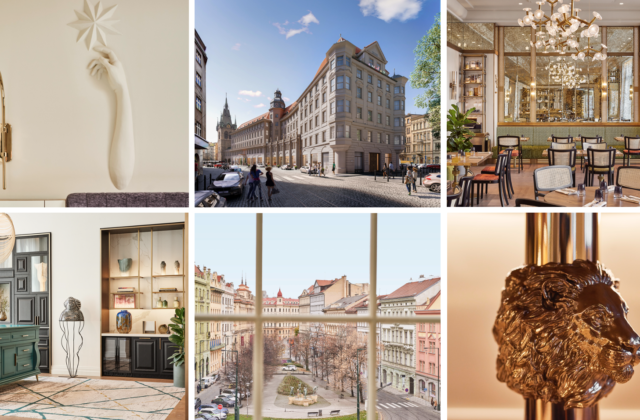An Inside Look at the Myths, Legends and Design Behind the Historic Andaz Prague

As travelers continue to seek out experiences that provide a deeper understanding of the history of the places they visit, I wanted to put Andaz Prague on your radar to gauge your interest in covering the hotel’s unique and historical design story.
The hotel’s building was formerly the ‘Sugar Palace’—a neo-baroque style cultural gem dating back to 1916 when it was built for the influential Sugar Industry Insurance Association. The building has served various purposes – from being a place where sugar barons would take their meetings, to a temporary refuge for deputies of the National Assembly in 1968 during the Soviet occupation, and in 1993, the building was categorized as a listed cultural monument. Now, it is home to Andaz Prague, the first Hyatt hotel in the city.
In a city deeply tied to myths and legends, Andaz Prague shines a light on these stories through the building’s history and original design details around every corner of the hotel as well as the integration of local artwork. Highlights, include:
- Original windows, doors and fireplaces have remained and the color palette compliments the neighboring houses. Special attention was paid to the original historically valuable preserved interiors, which were sensitively renewed and restored.
- Emphasis is placed on decoration, which is laced with national tradition, such as folklore patterns appear on carpets and walls and the use of wooden elements, a nod to traditional Czech carpentry.
- The hotel’s design is inspired by Czech myths and legends, such as the legend of Golem, Princess Libuše’s prophecy, and Prince Bruncvik:
- Bruncvik and his grand escape from Amber Isle carried off by a bird, is reflected in the reception area’s use of nest-like custom chandeliers.
- The original lionhead, found throughout the hotel, also comes from the legend of the Prince Bruncvik and his Faithful Lion. It can be seen in the black acrylic silhouettes of the forest on the Parlour walls. The design is crowned with a very special, hand-laid terrazzo floor in the matching color palette.
- The hotel presents works of Czech artists throughout, such as David Valner, Vendulka Prchalová, and Jakub Tytykalo.
- Art nouveau elements, for which Prague is known, reflect the history of the building. The movement is characterized by graceful, flowing lines; organic curves; repeating rhythm; decorative, often plant-based motifs; and asymmetry to make the structure feel alive.
 Travel Dreams Magazine
Travel Dreams Magazine